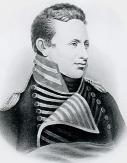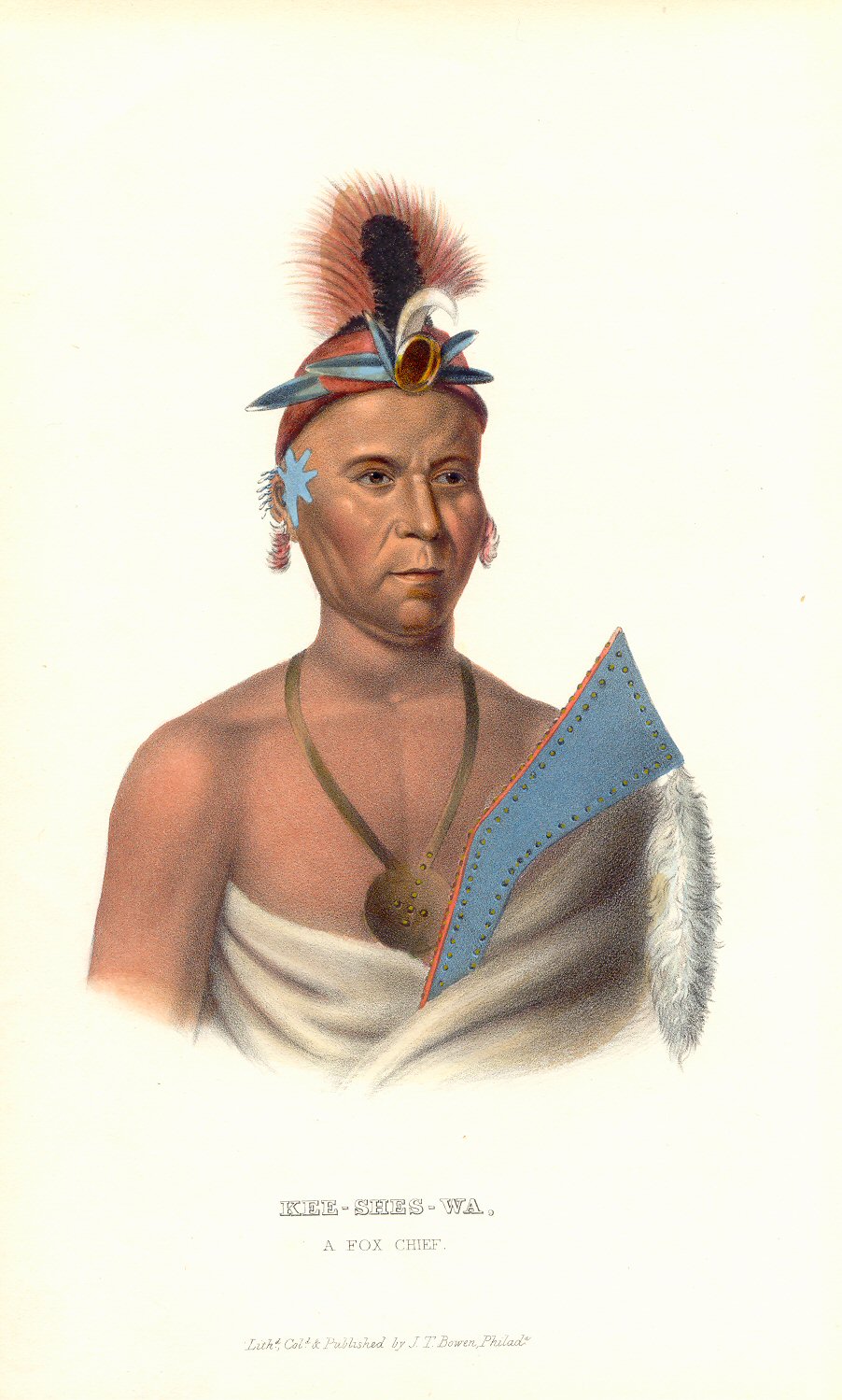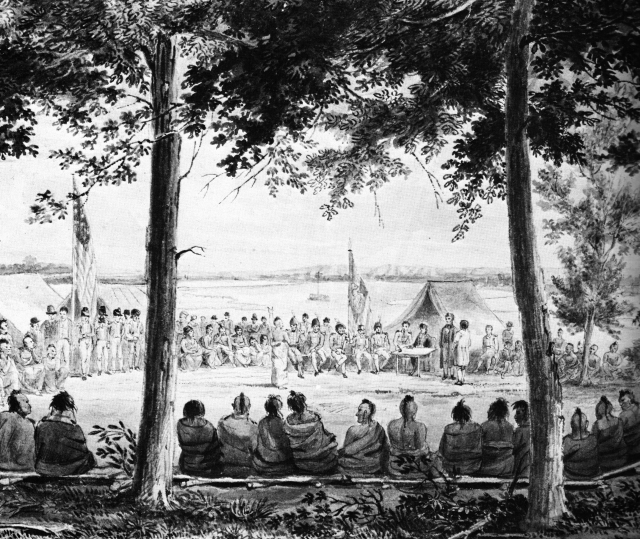|
Shakopee (Dakota Leaders)
Shakopee or Chief Shakopee (Dakota language: , ') may refer to one of at least three Mdewakanton Dakota leaders who lived in the area that became Minnesota from the late 18th century through 1865. The name comes from the Dakota ''Śakpe'' meaning "Six." According to tribal histories, the very first "Shakpe" was called that because he was the sixth child of a set of sextuplets. Shakopee Lake near Mille Lacs Lake was named after one of the early Dakota chiefs named Shakpe. The city of Shakopee, Minnesota was named after Chief Shakopee II when it was first founded in 1851. The Little Six Casino operated by the Shakopee Mdewakanton Sioux Community in Shakopee, Minnesota is named after Chief Shakopee III. Before Shakopee I Historian Doane Robinson mentioned an Ojibwe (Chippewa) attack "at the village of old Shakopee, the father of the Shakopee of 1812" which occurred in 1769, about one year after the Battle at Crow Wing. Shakopee I The chief usually referred to today as Sha ... [...More Info...] [...Related Items...] OR: [Wikipedia] [Google] [Baidu] |
Dakota Language
Dakota (''Dakhótiyapi, Dakȟótiyapi''), also referred to as Dakhota, is a Siouan language spoken by the Dakota people of the Sioux tribes. Dakota is closely related to and mutually intelligible with the Lakota language. It is critically endangered, with only around 290 fluent speakers left out of an ethnic population of almost 20,000. Morphology Nouns Dakota, similar to many Native American languages, is a mainly polysynthetic language, meaning that different morphemes in the form of affixes can be combined to form a single word. Nouns in Dakota can be broken down into two classes, primitive and derivative. Primitive nouns are nouns whose origin cannot be deduced from any other word (for example ''make'' or earth, ''peta'' or fire, and ''ate'' or father), while derivative nouns are nouns that are formed in various ways from words of other grammatical categories. Primitive nouns stand on their own and are separate from other words. Derivative nouns, on the other hand, are forme ... [...More Info...] [...Related Items...] OR: [Wikipedia] [Google] [Baidu] |
War Of 1812
The War of 1812 (18 June 1812 – 17 February 1815) was fought by the United States of America and its indigenous allies against the United Kingdom and its allies in British North America, with limited participation by Spain in Florida. It began when the United States declared war on 18 June 1812 and, although peace terms were agreed upon in the December 1814 Treaty of Ghent, did not officially end until the peace treaty was ratified by Congress on 17 February 1815. Tensions originated in long-standing differences over territorial expansion in North America and British support for Native American tribes who opposed US colonial settlement in the Northwest Territory. These escalated in 1807 after the Royal Navy began enforcing tighter restrictions on American trade with France and press-ganged men they claimed as British subjects, even those with American citizenship certificates. Opinion in the US was split on how to respond, and although majorities in both the House and ... [...More Info...] [...Related Items...] OR: [Wikipedia] [Google] [Baidu] |
Meskwaki
The Meskwaki (sometimes spelled Mesquaki), also known by the European exonyms Fox Indians or the Fox, are a Native American people. They have been closely linked to the Sauk people of the same language family. In the Meskwaki language, the Meskwaki call themselves ', which means "the Red-Earths", related to their creation story. Historically their homelands were in the Great Lakes region. The tribe coalesced in the St. Lawrence River Valley in present-day Ontario, Canada. Under French colonial pressures, it migrated to the southern side of the Great Lakes to territory that much later was organized by European Americans as the states of Michigan, Wisconsin, Illinois, and Iowa. The Meskwaki suffered damaging wars with the French and their Native American allies in the early 18th century, with one in 1730 decimating the tribe. Euro-American colonization and settlement proceeded in the United States during the 19th century and forced the Meskwaki/Fox south and west into the tal ... [...More Info...] [...Related Items...] OR: [Wikipedia] [Google] [Baidu] |
Sauk People
The Sauk or Sac are a group of Native Americans of the Eastern Woodlands culture group, who lived primarily in the region of what is now Green Bay, Wisconsin, when first encountered by the French in 1667. Their autonym is oθaakiiwaki, and their exonym is Ozaagii(-wag) in Ojibwe. The latter name was transliterated into French and English by colonists of those cultures. Today they have three federally recognized tribes, together with the Meskwaki (Fox), located in Iowa, Oklahoma and Kansas. History Early history The Sauk, an Algonquian languages people, are believed to have developed as a people along the St. Lawrence River, which is now northern New York. The precise time is unknown, but around the time of the year 1600, they were driven from the area of the St. Lawrence river. Some historians believe that the Sauk migrated to what is now eastern Michigan, where they settled around Saginaw Bay (Ojibwe: ''Zaagiinaad-wiikwed'' – "Of the Outlet Bay"). For many years, the ... [...More Info...] [...Related Items...] OR: [Wikipedia] [Google] [Baidu] |
Dakota People
The Dakota (pronounced , Dakota language: ''Dakȟóta/Dakhóta'') are a Native American tribe and First Nations band government in North America. They compose two of the three main subcultures of the Sioux people, and are typically divided into the Eastern Dakota and the Western Dakota. The four bands of Eastern Dakota are the Bdewákaŋthuŋwaŋ, Waȟpéthuŋwaŋ, Waȟpékhute, and Sisíthuŋwaŋ and are sometimes referred to as the Santee (''Isáŋyathi'' or ''Isáŋ-athi''; "knife" + "encampment", "dwells at the place of knife flint"), who reside in the eastern Dakotas, central Minnesota and northern Iowa. They have federally recognized tribes established in several places. The Western Dakota are the Yankton, and the Yanktonai (''Iháŋktȟuŋwaŋ'' and ''Iháŋktȟuŋwaŋna''; "Village-at-the-end" and "Little village-at-the-end"), who reside in the Upper Missouri River area. The Yankton-Yanktonai are collectively also referred to by the endonym ''Wičhíyena'' ("Those Who ... [...More Info...] [...Related Items...] OR: [Wikipedia] [Google] [Baidu] |
First Treaty Of Prairie Du Chien
The Treaty of Prairie du Chien may refer to any of several treaties made and signed in Prairie du Chien, Wisconsin between the United States, representatives from the Sioux, Sac and Fox, Menominee, Ioway, Winnebago and the Anishinaabeg ( Chippewa, Ottawa and Potawatomi) Native American peoples. Description The First Treaty of Prairie du Chien was signed by William Clark and Lewis Cass for the United States and representatives of the Sioux, Sac and Fox, Menominee, Ioway, Winnebago, and Anishinaabeg ( Chippewa and the Council of Three Fires of Chippewa, Ottawa and Potawatomi) on August 19, 1825, proclaimed on February 6, 1826, and codified as . Due to the overall tribal movements toward the western direction under pressure of encroaching settlers, the Sioux Nation resisted and came into conflict with other tribes moving west into their traditional territory. The United States negotiated the treaty to try to reduce inter-tribal warfare. The treaty begins by establishing p ... [...More Info...] [...Related Items...] OR: [Wikipedia] [Google] [Baidu] |
Thomas Say
Thomas Say (June 27, 1787 – October 10, 1834) was an American entomologist, conchologist, and Herpetology, herpetologist. His studies of insects and shells, numerous contributions to scientific journals, and scientific expeditions to Florida, Georgia, the Rocky Mountains, Mexico, and elsewhere made him an internationally known naturalist. Say has been called the father of American descriptive entomology and American conchology. He served as librarian for the Academy of Natural Sciences of Philadelphia, curator at the American Philosophical Society (elected in 1817), and professor of natural history at the University of Pennsylvania. Early life and education Born in Philadelphia into a prominent Religious Society of Friends, Quaker family, Thomas Say was the great-grandson of John Bartram, and the great-nephew of William Bartram. His father, Dr. Benjamin Say, was brother-in-law to another Bartram son, Moses Bartram. The Say family had a house, "The Cliffs" at Gray's Ferry Bridge, ... [...More Info...] [...Related Items...] OR: [Wikipedia] [Google] [Baidu] |
William H
William is a male given name of Germanic origin.Hanks, Hardcastle and Hodges, ''Oxford Dictionary of First Names'', Oxford University Press, 2nd edition, , p. 276. It became very popular in the English language after the Norman conquest of England in 1066,All Things William"Meaning & Origin of the Name"/ref> and remained so throughout the Middle Ages and into the modern era. It is sometimes abbreviated "Wm." Shortened familiar versions in English include Will, Wills, Willy, Willie, Bill, and Billy. A common Irish form is Liam. Scottish diminutives include Wull, Willie or Wullie (as in Oor Wullie or the play ''Douglas''). Female forms are Willa, Willemina, Wilma and Wilhelmina. Etymology William is related to the given name ''Wilhelm'' (cf. Proto-Germanic ᚹᛁᛚᛃᚨᚺᛖᛚᛗᚨᛉ, ''*Wiljahelmaz'' > German ''Wilhelm'' and Old Norse ᚢᛁᛚᛋᛅᚼᛅᛚᛘᛅᛋ, ''Vilhjálmr''). By regular sound changes, the native, inherited English form of the name shoul ... [...More Info...] [...Related Items...] OR: [Wikipedia] [Google] [Baidu] |
Stephen Harriman Long
Stephen Harriman Long (December 30, 1784 – September 4, 1864) was an American army civil engineer, explorer, and inventor. As an inventor, he is noted for his developments in the design of steam locomotives. He was also one of the most prolific explorers of the early 1800s, although his career as an explorer was relatively short-lived. He covered over 26,000 miles in five expeditions, including a scientific expedition in the Great Plains area, which he famously confirmed as a "Great Desert" (leading to the term "the Great American Desert"). Biography Long was born in Hopkinton, New Hampshire, the son of Moses and Lucy (Harriman) Long. Long's Puritan ancestors came from England during the Puritan migration to New England. He received an A.B. from Dartmouth College in 1809 and an A.M. from Dartmouth in 1812. In 1814, he was commissioned a lieutenant of engineers in the U.S. Army Corps of Engineers. Upon the reorganization of the Army in 1816, he was appointed a Major on 16 ... [...More Info...] [...Related Items...] OR: [Wikipedia] [Google] [Baidu] |
Upper Mississippi River
The Upper Mississippi River is the portion of the Mississippi River upstream of St. Louis, Missouri, United States, at the confluence of its main tributary, the Missouri River. History In terms of geologic and hydrographic history, the Upper Mississippi east and south of Fort Snelling is a portion of the now-extinct Glacial River Warren which carved the valley of the Minnesota River, permitting the immense Glacial Lake Agassiz to join the world's oceans at the Gulf of Mexico. The collapse of ice dams holding back Glacial Lake Duluth and Glacial Lake Grantsburg carved out the Dalles of the St. Croix River at Interstate Park. The Upper Mississippi River valley likely originated as an ice-marginal stream during the Pre-Illinoian Stage. The Driftless Area is a portion of North America left unglaciated at that ice age's height, hence not smoothed out or covered over by previous geological processes. Inasmuch as the Wisconsin glaciation formed lobes that met (and blocked) wher ... [...More Info...] [...Related Items...] OR: [Wikipedia] [Google] [Baidu] |
United States Department Of War
The United States Department of War, also called the War Department (and occasionally War Office in the early years), was the United States Cabinet department originally responsible for the operation and maintenance of the United States Army, also bearing responsibility for naval affairs until the establishment of the Navy Department in 1798, and for most land-based air forces until the creation of the Department of the Air Force on September 18, 1947. The Secretary of War, a civilian with such responsibilities as finance and purchases and a minor role in directing military affairs, headed the War Department throughout its existence. The War Department existed from August 7, 1789 until September 18, 1947, when it split into the Department of the Army and the Department of the Air Force. The Department of the Army and Department of the Air Force later joined the Department of the Navy under the United States Department of Defense in 1949. History 18th century The Departme ... [...More Info...] [...Related Items...] OR: [Wikipedia] [Google] [Baidu] |
American People
Americans are the Citizenship of the United States, citizens and United States nationality law, nationals of the United States, United States of America.; ; Although direct citizens and nationals make up the majority of Americans, many Multiple citizenship, dual citizens, expatriates, and green card, permanent residents could also legally claim American nationality. The United States is home to race and ethnicity in the United States, people of many racial and ethnic origins; consequently, culture of the United States, American culture and Law of the United States, law do not equate nationality with Race (human categorization), race or Ethnic group, ethnicity, but with citizenship and an Oath of Allegiance (United States), oath of permanent allegiance. Overview The majority of Americans or their ancestors Immigration to the United States, immigrated to the United States or are descended from people who were Trans Atlantic Slave Trade, brought as Slavery in the United States ... [...More Info...] [...Related Items...] OR: [Wikipedia] [Google] [Baidu] |








